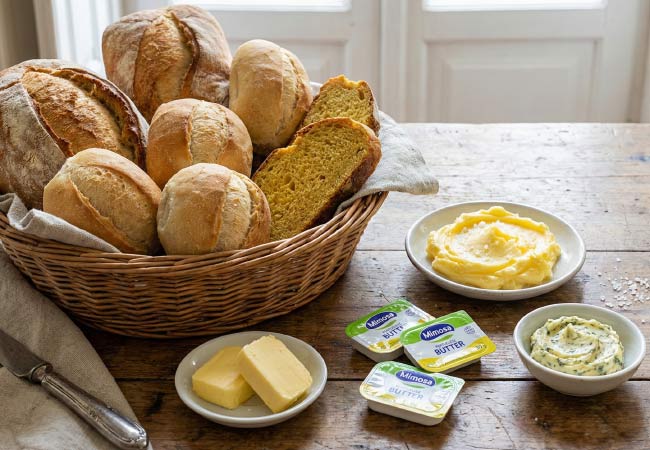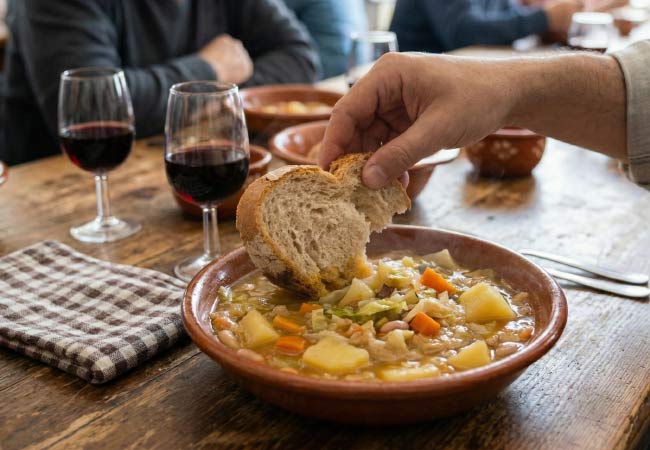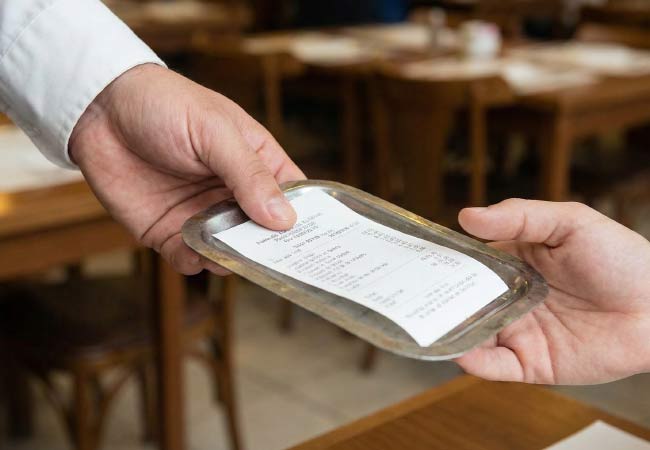MyPortugalHoliday.com
The best independent guide to Portugal
MyPortugalHoliday.com
The best independent guide to Portugal
Why Do Portuguese Restaurants Give You Food You Didn't Order?
You've just sat down at a restaurant in Portugal, famished after a day of sightseeing. Before you've even opened the menu, a waiter appears with a basket of bread, dishes of olives, butter, cheese, and perhaps some sardine pâté. You didn't order any of this – so what's happening?
Welcome to the Portuguese "couvert" system, one of the country's most confusing restaurant traditions for tourists. Unlike the complimentary bread you might receive in other countries, these appetisers aren't free, and that innocent-looking olive you just popped into your mouth has already added a few euros to your bill.
The Couvert Trap: How It Works
The couvert (cover charge) is a Portuguese dining tradition where restaurants place various starters on your table without being asked. It's perfectly legal and deeply ingrained in Portuguese restaurant culture, but it catches countless tourists off guard. The moment you touch any item – even taking a single olive or spreading butter on one piece of bread – you'll be charged for the entire selection.
The genius (or deviousness) of this system is its timing. Restaurants know you're likely to be hungry when you sit down. That warm, crusty bread sitting right in front of you becomes almost irresistible, especially when you're still waiting to order. It's human nature – when we're hungry and food is placed directly in front of us, resistance becomes surprisingly difficult.

The 'Couvert Trap': While this spread of appetizers looks inviting, remember that in Portugal, if you eat it, you pay for it.
The Economics Behind the Bread Basket
From a restaurant's perspective, the couvert is easy money with astronomical profit margins. A basket of bread that costs the restaurant perhaps 25 cents will appear on your bill for €1 or more. That pat of butter? Another euro. The small dish of olives? €2-3. These items have higher markup percentages than almost anything on the main menu.
Tourist-heavy restaurants are particularly aggressive with this practice. They've learned that foreign visitors, unfamiliar with the system and often too polite to complain, will simply eat what's presented and pay without question. In contrast, traditional tascas frequented by locals might offer a more modest couvert or price it more reasonably.

Fresh crusty bread and packets of butter are the most common items in a Portuguese couvert
The Hygiene Question Nobody Wants to Ask
Here's an uncomfortable truth: in less scrupulous establishments, that untouched bread might have already visited several tables before landing on yours. While reputable restaurants would never do this, some budget places have been known to recycle unopened packets of butter or untouched bread baskets.
This is why you might notice Portuguese diners doing something peculiar – pressing or squeezing the bread before eating it. They're checking for freshness, as reused bread tends to lose its crispy crust and become tough or stale. It's a subtle quality control method locals have developed over years of dining out.
The Strategic Problem of Pre-Meal Snacking
Beyond the cost, there's another issue with the couvert that many tourists don't consider until it's too late: filling up on bread before your meal arrives. Portuguese portions, especially in traditional restaurants, tend to be generous. If you've already consumed half a basket of bread with butter and cheese, plus olives and pâté, you might find yourself struggling to finish your actual meal.
This is particularly problematic given that Portuguese cuisine features some spectacular starters. A proper Portuguese soup – whether it's caldo verde, açorda, or sopa de peixe – is infinitely more satisfying than filling up on bread. Yet many tourists never discover these delights because they've already satisfied their initial hunger with the couvert.

Your Rights as a Diner
Here's what many tourists don't realise: you can refuse the couvert. The moment items are placed on your table, you have every right to say "Não, obrigado/a" and ask for them to be removed. The key is to do this immediately, before touching anything. Once you've taken even a single bite, you'll be charged for everything.
Some waiters might act surprised or even slightly offended when you refuse, particularly in tourist areas where acceptance is the norm. Stand firm. It's your money and your meal. If you specifically want just the bread, or only the olives, you can request these items individually, though some restaurants might still charge the full couvert price.

The Sardine Pâté Exception
If you're going to indulge in any couvert item, seasoned Portugal travellers often recommend the sardine pâté. When it's good, it's exceptional – a true taste of Portugal that you won't find elsewhere. Made with quality Portuguese sardines, butter, and sometimes a hint of lemon or piri-piri, it's one couvert item that might actually be worth the markup.
Navigating the System Like a Local
To handle the couvert situation professionally:
1) Decide immediately – The moment items arrive, either refuse them or accept that you'll be paying
2) Ask prices upfront – It's perfectly acceptable to ask "Quanto custa o couvert?"
3) Be selective – Request only what you actually want
4) Check your bill – Ensure you're only charged for what you consumed
5) Save room – If you do indulge, remember that Portuguese main courses are typically generous
The Bottom Line
The couvert system isn't a scam – it's a cultural tradition that happens to be monetised in ways that can feel exploitative to visitors. Portuguese people grow up with this system and navigate it naturally, knowing when to refuse, when to indulge, and how to spot fresh bread from recycled.
For tourists, the key is awareness. Now that you know the bread isn't free, you can make informed decisions. Sometimes, after a long day of exploring, that overpriced but delicious bread with creamy Portuguese butter might be exactly what you want. Other times, you'll confidently wave it away and save both euros and stomach space for the magnificent meal ahead.
Just remember: in Portuguese restaurants, there's no such thing as a free lunch – or even a free pre-lunch snack.
Discover more of central Portugal with our guides























